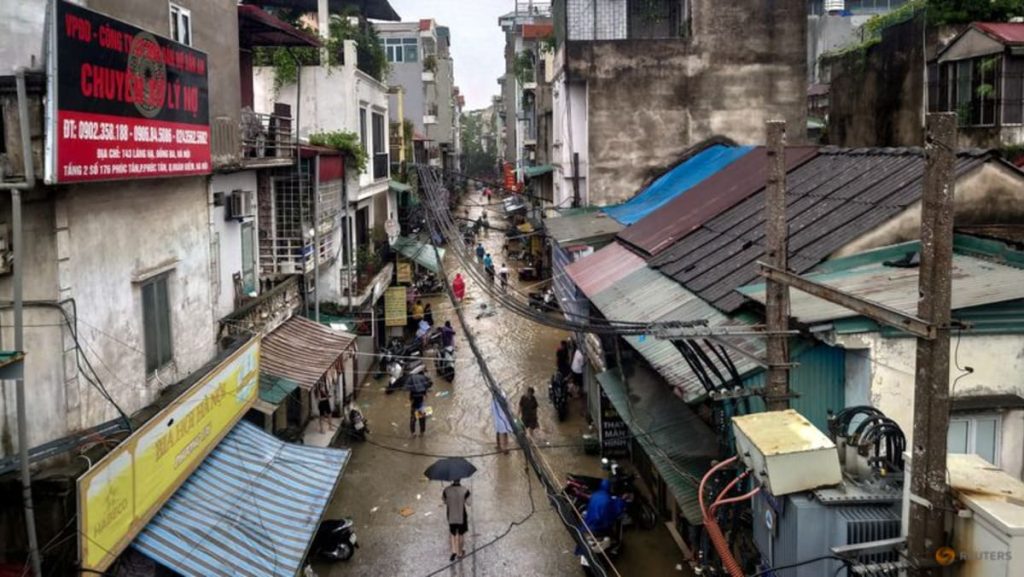Hoang Van Ty, a resident of Thai Nguyen province, expressed shock at the depth of flooding around his house, which has submerged his clothes and furniture. Despite this, he managed to save most of his belongings by closing the doors before the flood waters rose. Thai Nguyen province is also home to the largest smartphone manufacturing plant of Samsung Electronics in Vietnam, which has been affected by the flooding. While some parts of the province have seen receding waters, efforts are underway to clean up the aftermath of the disaster.
The floods in Thai Nguyen province have affected more than 200,000 hectares of rice and cash crop fields, causing significant damage to the agricultural sector. Landslides and floods have disrupted power supplies and damaged factories in Haiphong and Quang Ninh provinces, leading to a halt in production. Several countries, including Australia, Japan, and the United States, have pledged to provide aid to Vietnam in response to the natural disaster. This aid will be crucial in supporting the affected communities and facilitating recovery efforts in the region.
In addition to Vietnam, the typhoon has also caused widespread flooding and devastation in Laos, Thailand, and Myanmar. Deadly landslides and river flooding have been reported in these countries, leading to loss of life and destruction of property. The Mekong River Commission issued a flood warning for the historic city of Luang Prabang in Laos, a UNESCO world heritage site, as the Mekong River is expected to reach flood levels in the area. In Thailand, the death toll has risen to eight, with additional deaths reported from a landslide in Chiang Mai province.
Mae Sai district in Thailand, located on the border with Myanmar, is facing its worst floods in 80 years, according to a senior interior ministry official. The extreme weather conditions caused by the typhoon have resulted in widespread damage and displacement of communities in the region. The international community, including neighboring countries and global partners, has been mobilizing aid and support to assist those affected by the disaster. The collaborative efforts of multiple nations aim to provide relief to the impacted populations and help them recover from the devastating effects of the flooding.
The impacts of the typhoon in Southeast Asia highlight the vulnerability of the region to natural disasters and the importance of preparedness and resilience in facing such challenges. The widespread flooding and landslides have underscored the need for coordinated response and assistance to address the humanitarian crisis caused by the extreme weather events. The provision of aid and support from international partners demonstrates solidarity and cooperation in times of crisis, as countries come together to provide relief and assistance to those in need. The recovery and rebuilding process following the disaster will require sustained efforts and resources to help communities in the affected areas recover and rebuild their lives.













